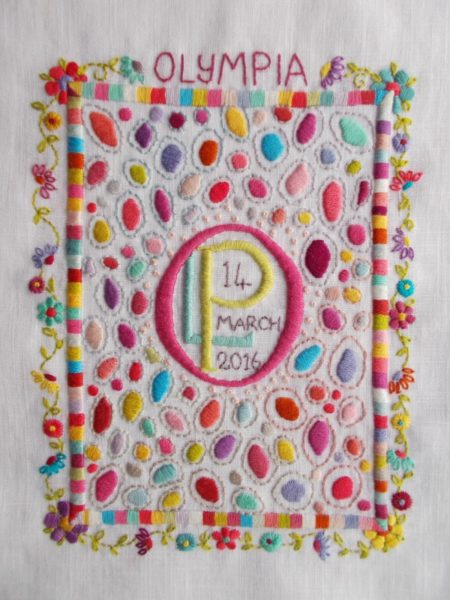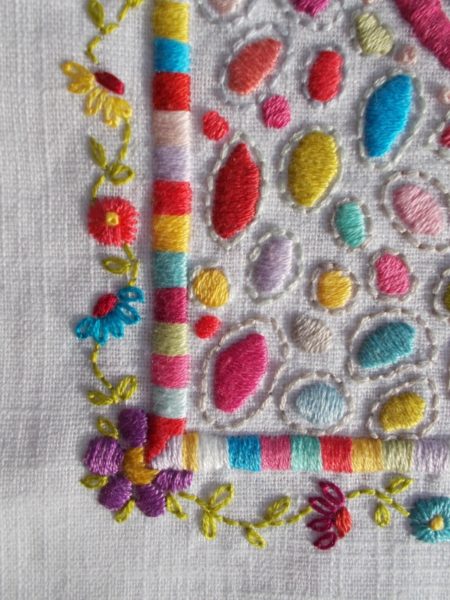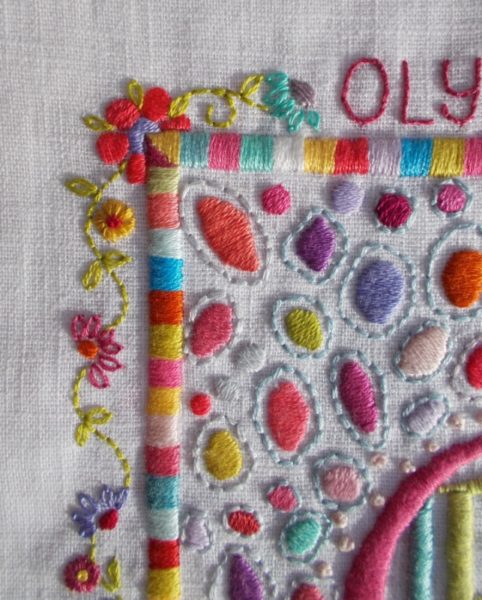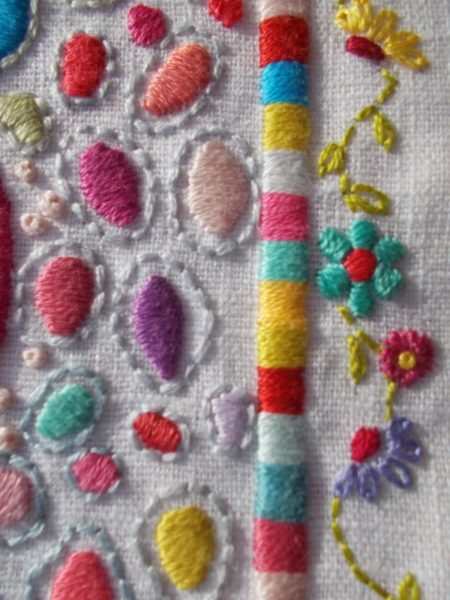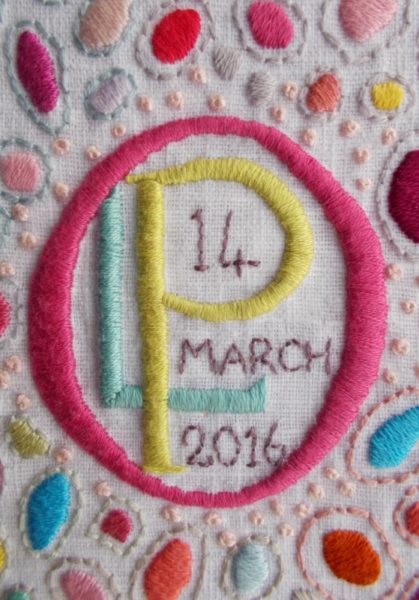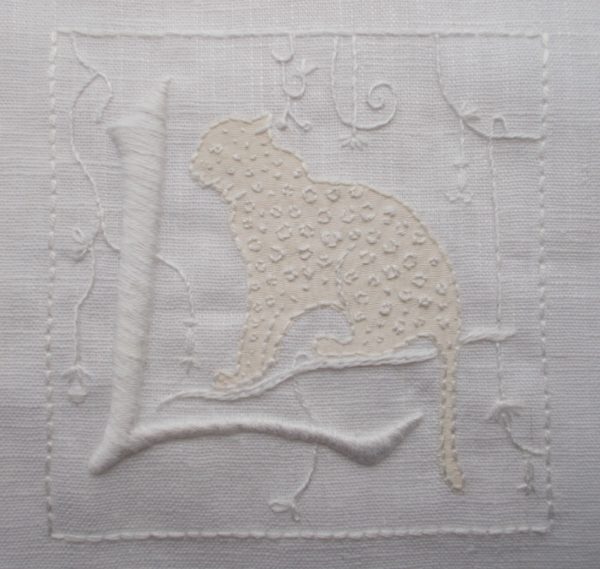
Leopard, after Maxwell Armfield (hand embroidered by Maary Addison)
And now a return to the my whitework alphabet which I left hanging at K before Christmas. At first I thought, ‘leopard’ (Panthera pardus) as a little print by Maxwell Armfield has been in my mind for some time. I like the strong line of the animals (see his prints towards the end of the post) but I also like the tangling creepers with their exotic orchid-like flowers, which may or may not be what leopards spend their days pushing to one side as they pad through the tropical jungle. However, though the image pleased me, I’m not sure it worked in whitework and I left it thinking the image really needed colour…
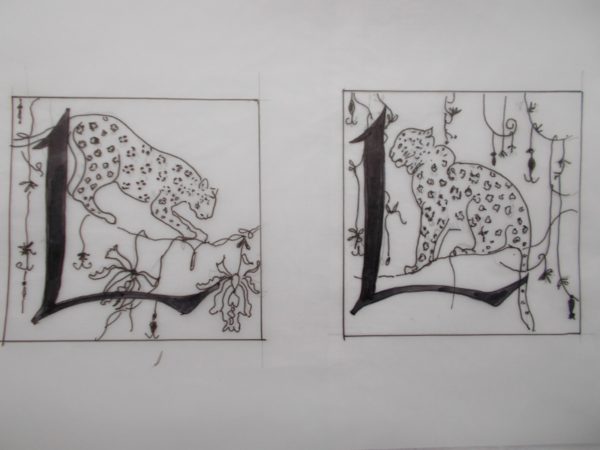
Drawings of Maxwell Armfield’s leopard prints
On I moved to ‘lion’ (Panthera leo), deciding a lion’s head would make more of an impact. Well the head’s fine in general but the mouth in particular has proved beyond me. I think I need to wash the piece and clean up some of the stitching around the face. So, undecided, here are both of them.
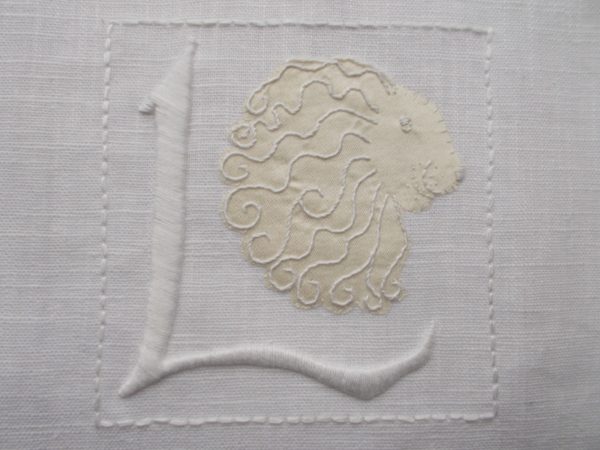
Lion embroidery (hand appliquéd and embroidered by Mary Addison)
Interestingly, black panthers can be black variants of any of the Panthera genus, though most often they are leopards (in Asia, where the spots are still there, appearing in certain lights as ‘ghost’ spots) and jaguars in the Americas.
Maxwell Armfield (1881-1972) was an artist of several styles and a master of different mediums. He learned Tempera painting (pure pigment plus egg yolk) from Joseph Southall at Birmingham School of Art and paintings in this medium have a C19th feeling, evoking Pre-Raphaelite painting and themes, with more than a hint of Symbolism. His depiction of Swinburne’s ‘Faustine’ could just as well be that of a distracted Janey Morris courted by a hapless wishy washy aesthete (I now realise it’s probably Armfield himself). It is not to my taste, though for me the painting is saved by the little still life of coffee pot and porcelain tea cup in the foreground on the right and the covetable carpet. Armfield’s self portrait seems mannered and self conscious but this has not stopped it appearing on the cover of numerous editions of Oscar Wilde’s “Portrait of Dorian Gray”. I suppose a book in which reality is suspended lends itself well to an unworldly depiction of the real. Elsewhere his scenic backgrounds with lavish foliage fall into the dream world of Douanier Rousseau.
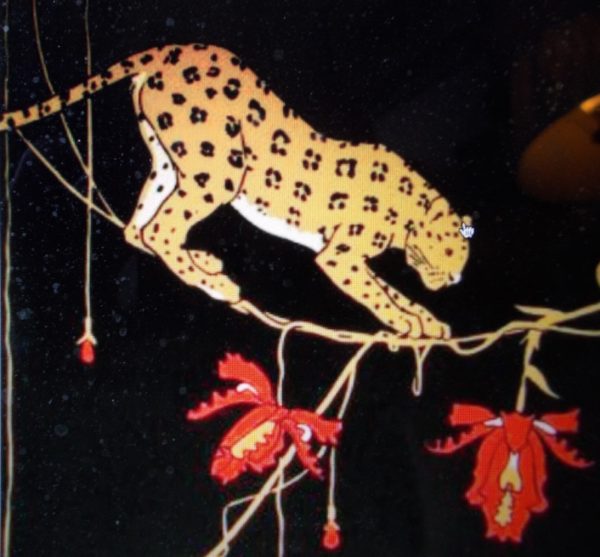
Maxwell Armfield: Leopard
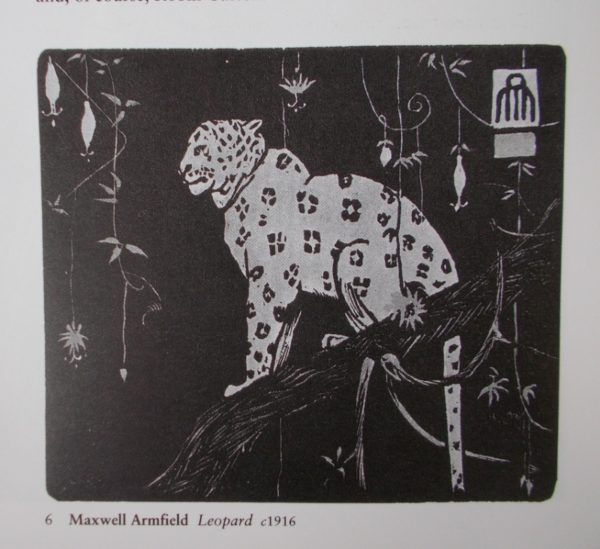
Maxwell Armfield: Leopard (Note his monogram)
But his still life flowers can be wonderful, of luminous colour and often with just the right amount of decay to call to mind those C17th Dutch masters of the genre. A London Underground poster “Go to Kew”, with white cockatoo and exotic flowers shows he could also do C20th commercial work too, while a painting of Oxford Circus Underground Station is good urban modern. His many book illustrations tend not to be reproduced but when they are, the style is more of the C19th than the C20th – this time with shades of Aubrey Beardsley. Curiously, his best known work is probably a reproduction of a mural of a naked man and a white horse, as it appeared as an album cover on Fleetwood Mac’s 1969 ‘Then Play On’. Originally the work was created for the wall above a fireplace in a London town house in 1917, although I think it has been lost since.
Duncan Grant would apparently have nothing to do Armfield, regarding him as too “of the last century” (fannycornforth.blogspot.com) which is ironic when you think of all those book and record covers.
(Links to the paintings will appear sometime soon.)

